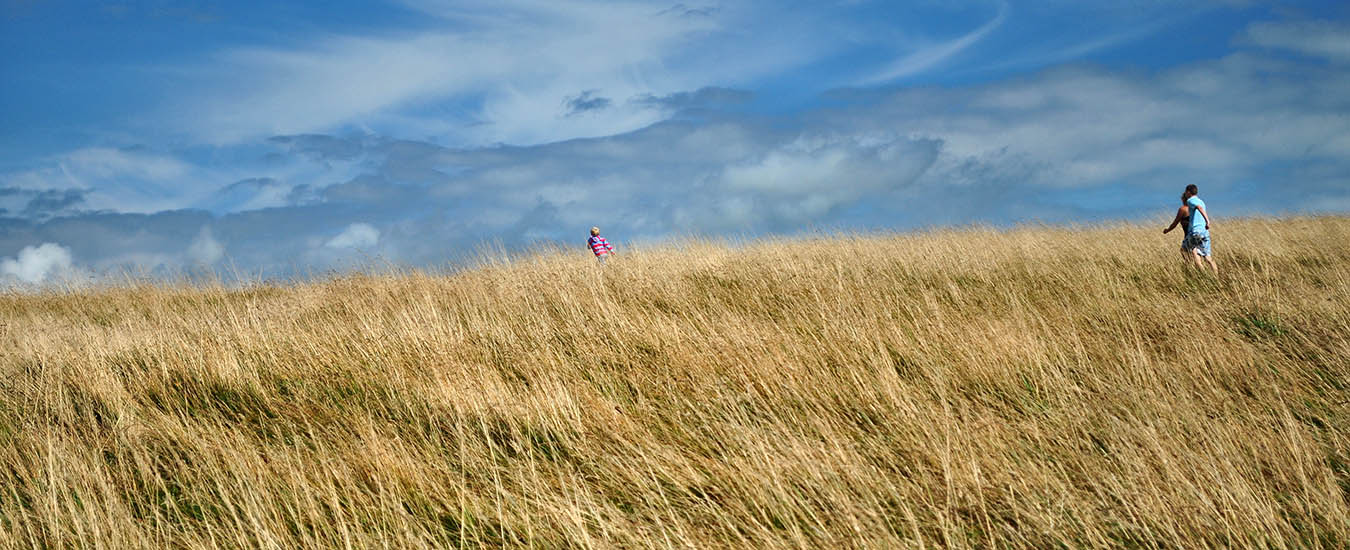From whales to warfare, our region is chock full of character, and a few surprises too.
One dark, spitting, winter morning, I stood near the cannons at Quidi Vidi Battery in St. John's, NL. The French built a small fortification here after they captured the city from the British in 1762, but British troops soon kicked them out for good, built a battery and kept it manned, armed and watchful through the American Revolution, the War of 1812 and the Civil War. While I contemplated all this history, admired the impossibly picturesque Quidi Vidi Village and heard the ocean rhythmically bash stone, I noticed a big fellow watching me from atop a rock above my head. The first snowy owl I'd ever seen, he stared at me with cold yellow eyes as though I were a chubby lemming. History and wildlife.

With my two little granddaughters, I sailed my 22-foot yawl on Chedabucto Bay in Guysborough County, NS. Near the site of a French stronghold that fell to the British more than 300 years ago, a beluga whale romped along beside us, and came so close, the girls patted her amiable head and stroked her spongy grey flanks. "Cool, granddad. She feels like Camembert cheese!" The local museum, not a mile away, boasts cannonballs plucked from the ruins of the French fort. Wildlife and history.
Its defunct cannons pointing at the United States, St. Andrews, NB, wears its pro-British history as proudly as a redcoat saluting the Union Jack. But what have we here, shambling into the heart of this super-civilized resort town, then crossing the once-masted harbour to the wilderness on Navy Island? A full-grown moose. At least it's not a deer. Deer routinely pillage the vegetable gardens of the handsome colonial houses that bear plaques boasting of the United Empire Loyalists who occupied the same dwellings generations ago. History and wildlife.
When Americans visit the legislative chamber in Fredericton, a shocker confronts them. In a conspicuous place of honour hangs a portrait of a man they may know as the devil incarnate, the very symbol of the vile British behaviour that caused the American Revolution: King George III. History and surprises.
As the late Fredericton-based poet Alden Nowlan once asked, "Where else could you drive past a wild black bear on the way to work and attend a reception for the Dalai Lama that same afternoon? That has actually happened in Fredericton, a city of almost surrealistic surprises."
Atlantic Canada still has room for surprises, thank heaven. Our history is full of warfare, privateers, shipwrecks and talks that led to the birth of a nation. But our population, still under three million, has never been big enough to obliterate the wilderness or deface the immensely intricate 13,200-kilometre coastline.
So bald eagles still glide above the Fortress of Louisbourg on Cape Breton Island. Once France's "Dunkirk of the North," it's one of the world's finest historic reconstructions. And as Atlantic salmon charge up the Miramichi River to spawn where they were born, they still pass Red Bank, a 3,000-year-old First Nations settlement and easily the oldest village in Atlantic Canada. Foxes still prowl the sumptuous dunes on Prince Edward Island beaches near the 19th century birthplace of Lucy Maud Montgomery, who wrote the immortal Anne of Green Gables. White-sided dolphins still cavort in Halifax Harbour. Founded by the British in 1749, Halifax has thrived in war after war after war after war. In the waters off L'Anse aux Meadows in northern Newfoundland, where Vikings settled more than 1,000 years ago, you can still see whales charge, roll, dive and spout.
For generations, we've lamented our lack of industry and languishing economies. This is certainly understandable, but it's worth remembering that these four beautiful, out-of-the-mainstream and thinly populated provinces boast North America's most extraordinary combination of history, wilderness and surprise. We're lucky to be here.

